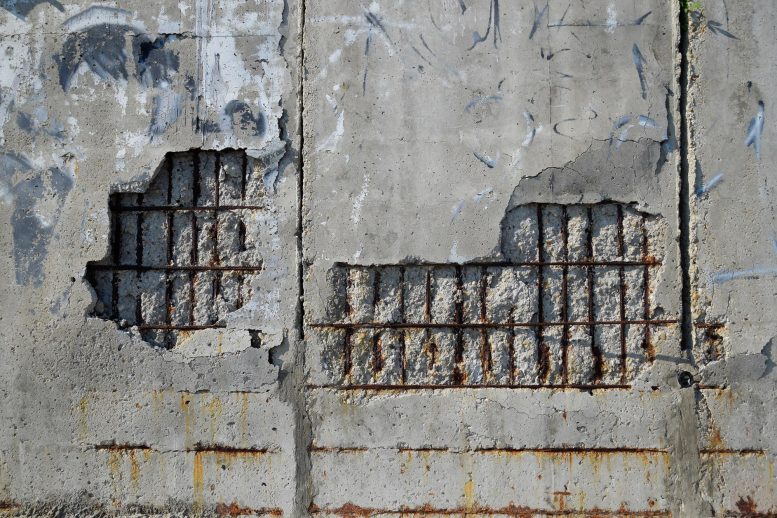By David Giles Global News
Posted October 8, 2021 2:25 pm

The Saskatchewan Health Authority (SHA) says any legal affidavits it receives objecting to COVID-19 immunizations will not be entered into its database and will be destroyed.

The province brought in measures on Oct. 1 that require proof of vaccination or a negative test in order to enter a number of facilities and events.
It also allows businesses not covered under the public health measure to opt in.
The SHA said immunization in Saskatchewan is voluntary and the measures brought in on Oct. 1 are not regulations, bylaws or orders under the Public Health Act.
“Some individuals choose to interpret the public health measures and the above regulations as a mandatory immunization policy, and have gone to the trouble of securing affidavits objecting to immunization,” the SHA said in a statement.
“Some Commissioners of Oath in Saskatchewan are also charging a fee to submit these affidavits for processing.”
The SHA said the affidavits serve no purpose as immunizations are not mandatory and an exemption is not required.
“If a resident elects not to be vaccinated or cannot be vaccinated, presentation of a negative test will be the accommodation in order to access those non-essential businesses and services as outlined in the public health order,” the SHA said.
“No other documentation will be accepted in lieu of proof of vaccination or a negative test result.”
It is asking people who are considering submitting an affidavit not to do so.
Health officials absent from recent government COVID update
Premier Scott Moe's message to Saskatchewan people ahead of the Thanksgiving long weekend was not to take extra precautions to bring down nation-leading COVID-19 cases and record hospitalizations — it was to explain a new structural response aimed at co-ordinating pandemic response.
In recent days, the provincial government's messaging on the fourth wave of the pandemic has diverged sharply from medical health officers in the Saskatchewan Health Authority, doctors and its own chief medical health officer.
Thursday's COVID-19 news conference, for the first time in recent memory, featured no appearance from Dr. Saqib Shahab or a representative from the health authority.
A week earlier, Shahab told the public the province was headed toward a "fall and winter of misery."
"We will not only not have Thanksgiving at this rate. We will likely not have Christmas and New Year's at this rate," Shahab said on Sept. 29.
With the province experiencing "a mass casualty event every day," Shahab said "maybe other public health orders will be required."
At a public board meeting last week, health authority CEO Scott Livingstone said the province was three weeks away from seeing doctors use medical triage procedures and may need help from outside the province to care for critically ill patients.
Neither Shahab nor Livingstone were a part of Thursday's COVID update.
On Friday, Saskatchewan reported 576 new cases — three more than Ontario, despite having roughly 13.4 million fewer people.
Saskatchewan now leads the nation in new cases per capita over seven days, with a rate more than three-and-a-half times the national average.
The province also has the highest rate of deaths per capita over a seven-day period — more than five times the national average (0.7 per 100,000 nationally and 3.6 in Saskatchewan, as of Thursday).

Since pandemic restrictions were lifted on July 11, a total of 168 people have died from COVID-19 in the province. In 2020, Saskatchewan had 153 COVID-related deaths.
Moe led Thursday's news conference announcing a change in COVID-19 response through the creation of an Provincial Emergency Operations Centre. It will be co-led by the Public Safety Agency, the health authority and the ministry of health.
When Moe was asked if the province would implement gathering restrictions or other measures if the current COVID-19 situation did not improve, he said the province will not implement "broad-based restrictions" because more than 80 per cent of people 12 and older had received their first dose of a COVID-19 vaccine and "done the right thing."
He added the mask mandate, proof-of-vaccination policy, and requirement for government workers to be vaccinated or test negative are "significant."
He later said "nothing is ever off the table."
Restrictions needed, says medical health officer
On Thursday evening, the Saskatchewan Health Authority held its regular weekly physicians' town hall.
A presentation from Dr. Johnmark Opondo, an SHA medical health officer in Saskatoon, said "restrictions in personal and public gathering sizes are needed once again."
The recommendation was for "small and consistent" household-only bubbles.
Opondo said unvaccinated social gatherings are driving the current COVID-19 surge, and "the greatest concern right now is casual in-home gatherings."
None of that guidance or advice was conveyed in Thursday's news conference.
Moe did highlight the impact of unvaccinated people putting pressure on the province's health-care system, pointing out nearly 80 per cent of new cases and hospitalizations in September were in those not fully vaccinated.
"This pandemic is being prolonged by unvaccinated people, and there's no reason for it," Moe said.
Roughly 25 per cent of new daily cases over recent weeks have been children 11 or younger who are not yet eligible to be vaccinated.
Saskatchewan's vaccination rates among eligible people trail all other provinces but Alberta.
"The evidence is clear. Vaccines do work," Moe said Thursday, imploring those who are unvaccinated to get their shots.
"We look at the evidence. We listen to the doctors. We listen to the experts. Stop listening to all of the nonsense that is out there on social media," he said, referring to misinformation about the pandemic and vaccinations.
When it comes to listening to doctors and experts on how to control the current situation, the government seems less receptive.
Saskatoon city council had requested gathering limits for the Thanksgiving weekend, based on advice from a medical health officer in the city.
The province denied the request.
Similar requests have been made by the Saskatchewan Medical Association and the Saskatchewan Union of Nurses.
"Without indoor gathering limits, COVID-19 will spread and people will die," SUN president Tracy Zambory said in a news release last week.
Medical association president Dr. Eben Strydom added that mask mandates and vaccination requirements "are essential but are not enough" to curb the spread of the more transmissible delta variant of the coronavirus that causes COVID-19.
"With the approach of colder weather, gatherings will move indoors, creating the potential for surges in cases," Strydom said in the release.
Zambory said Thursday that rather than emergency response changes, the province needs to announce health measures.
"We're creating more and more dangerous situations because there seems to be this refusal to put tighter public health orders on so that we can try to stem the tide of COVID that is ravaging our health-care system," she said.
200 surgeries a day cancelled: ICU specialist
Last week, Health Minister Paul Merriman said the province's health-care system was "intact." On Thursday, Moe vowed to "preserve people's right to access health care in this province."
This is in contrast to the reality of surgeries and other procedures indefinitely postponed due to the volume of COVID-19 patients in hospitals.
Moe said 275 health-care services have been "reduced or slowed down" to open more ICU capacity in the province.
Saskatoon intensive care specialist Dr. Hassan Masri told CBC on Thursday that 200 surgeries are being cancelled every day.
"[These] are not procedures that can wait, or should wait, for two months or six months or more. That is going to lead to … pain, decrease in the quality of life or even maybe more serious things than that."
The cancellations have far-reaching implications for everyone in Saskatchewan, regardless of their current health or vaccination status, Masri said.
As of Friday, 71 people with COVID-19 were in Saskatchewan ICU beds. That's nearly the regular amount of total ICU beds for the entire province.
Moe said the province is surging to 130 ICU beds and that a move to 175 beds is "proving to be very challenging."
Despite this, he said the province has not formally requested help from the federal government in the form of health-care workers or ICU specialists to assist in hospitals.
"We should be looking for every opportunity and every resource that we have before we go make an external request. Is there an opportunity for us to even look deeper within our province?"
Saskatchewan NDP Leader Ryan Meili said the premier should have introduced gathering limits and should reach out to the federal government for health-care workers to support the province.
"The SHA is telling doctors people will die because they don't have any more capacity left," the Opposition leader said Friday.
"For Scott Moe to have not just picked up the phone and asked for health workers is beyond negligent, it's inviting disaster.
















